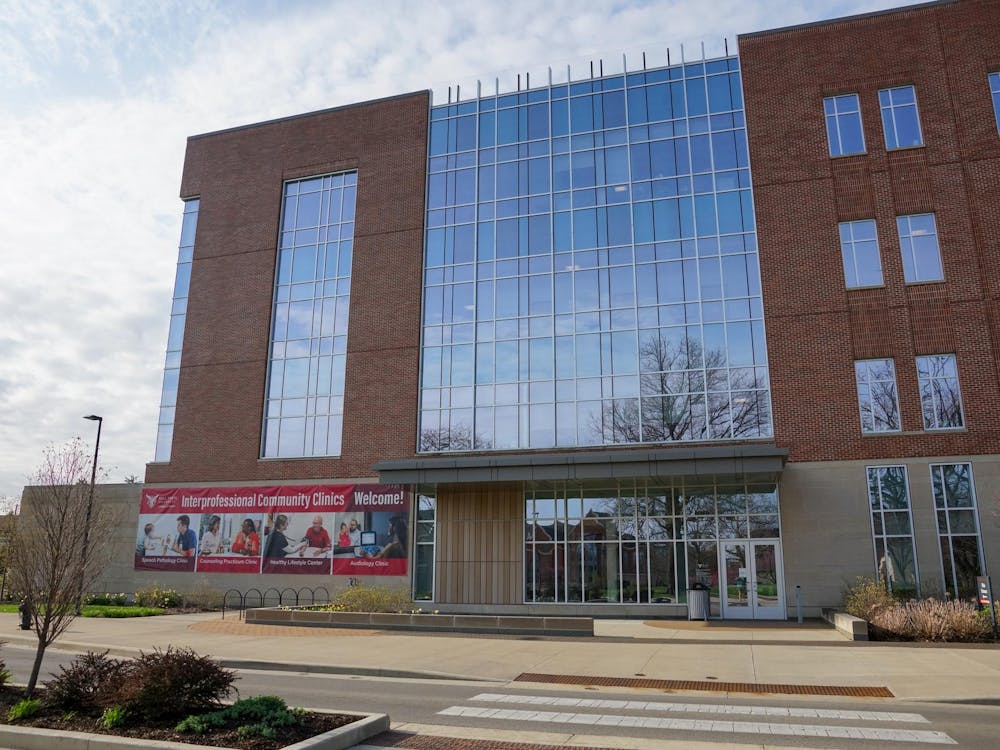The Counseling Center hosts Weight Not, Want Not, a support group for women with eating disorders or body image struggles who want to learn to cope. The group meets Fridays from 3-4 p.m. and requires an appointment at the Counseling Center before joining.
Health professionals are more likely to disregard symptoms of eating disorders in women of color than in Caucasian women, according to the National Eating Disorders Association.
Molly Beagle, a therapist at the Ball State Counseling Center, presented this problem for discussion at an event called Get a Cultural Perspective on Eating Disorders as part of National Eating Disorders Awareness Week.
“This is affecting individuals across race, across sexual orientation, across both genders,” Beagle said. “It’s just traditionally not viewed as a problem outside of white women.”
Beagle spoke to an audience of about 30 people at the L.A. Pittenger Student Center Feb. 24. She explained why the commonly accepted idea that eating disorders only affect middle-class white women is not only insensitive, but also dangerous.
In the presentation, Beagle said that women of color are more likely to have their symptoms of eating disorders brushed off until the symptoms are more severe and therefore more dangerous.
“I feel like that the idea that this is still a white woman’s problem is still very much out there,” Beagle said. “Even though as a clinician, in my professional community we recognize that’s not the case, I feel like that message is still out there in the public.”
Eating disorders have increased among men, but Beagle said this increase may be due to an influx in sensitivity toward diagnosing male cases. In the United States alone, 10 million men have an eating disorder, compared to 20 million women.
Beagle also addressed eating disorders within the LGBT population, citing that 42 percent of men with eating disorders are gay. This may stem from past discrimination, bullying and violence, resulting in a negative body image which can then lead to an eating disorder.
According to Beagle's presentation, body image and media exposure do not have direct relationships. However, how one reacts to media influences his or her body image. If someone internalizes thin ideals showed on TV, they are more likely to have a greater body dissatisfaction and a greater risk for developing eating disorders.
Body image can also stem from childhood, Beagle said. Parents who have a negative body images, negative attitudes toward food, constantly diet or emphasize appearances are more likely to have children with bad body images who have a higher risk of developing an eating disorder.
Carla Smith, a first-year pre-nursing major at Ball State, attended the presentation to fulfill a requirement for her COMM 210 class. However, she has a personal connection to the presentation.
“I have a close friend that had a little sister that had an eating disorder, and she’s still recovering from it now, and she spent a month in the hospital,” Smith said. “She was a sophomore in high school.”
Smith also said girls have high expectations for their appearances because of media.
“Girls in magazines are always flawless and skinny and photoshopped, and I feel like girls are just expected to look like that,” Smith said.
Peyton Kramer, a first-year architecture landscaping major, said the presentation was an important topic for students.
“Especially here at college, seeing other people and understanding how they feel [is important], and especially girls around this area,” Kramer said.
The Counseling Center provides assistance for any student with an eating disorder and can be reached at 765-285-1736.




